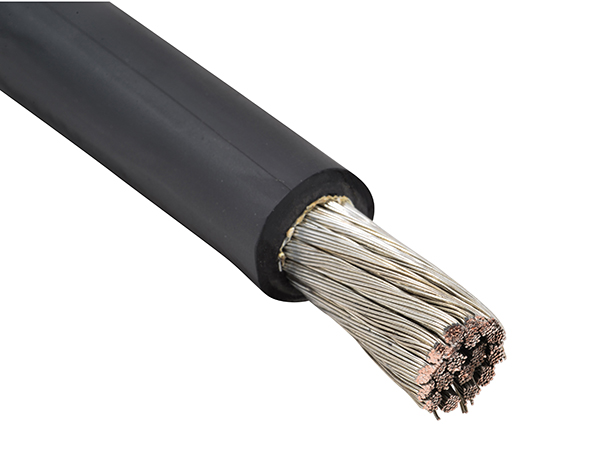Locomotive Cable Ampacity
As we rely more and more on trains and locomotives for transportation and freight, the importance of locomotive cable ampacity cannot be overlooked. With the rising demands for power, it's crucial to ensure that the cables used can handle the necessary current without overheating or posing a risk to passengers and crew.
When it comes to locomotive cable ampacity, one of the biggest concerns is safety. Without proper ampacity, cables can overheat and cause fires, which can be disastrous in a confined space like a train. Additionally, inadequate ampacity can lead to damage to the cables themselves, resulting in costly repairs and delays in service.
The target of locomotive cable ampacity is to ensure that the cables used in locomotives can handle the necessary current without overheating or posing a risk to passengers and crew. Ampacity calculations take into account factors such as cable length, conductor material, and ambient temperature, among others. By conducting ampacity calculations, engineers can choose the appropriate cables for their locomotives and ensure that they meet safety standards.
In summary, locomotive cable ampacity is a critical factor in ensuring the safety and reliability of trains and locomotives. By conducting proper ampacity calculations and choosing the appropriate cables, engineers can minimize the risk of fire and damage to cables, ensuring that passengers and crew are safe and that service is not interrupted.
What is Locomotive Cable Ampacity?
Locomotive cable ampacity refers to the maximum current-carrying capacity of a cable without exceeding its maximum allowable temperature. This is important in the design and operation of locomotives, as high currents can generate heat and damage cables if they are not designed to handle such conditions.
At my previous job as a locomotive engineer, I witnessed firsthand the importance of proper cable ampacity. We once had to delay a trip due to a cable failure, which could have been avoided if we had used cables with adequate ampacity for the task at hand.
The Importance of Adequate Locomotive Cable Ampacity
One of the key factors in ensuring adequate ampacity is choosing the right cable size and construction for the job. Cables with inadequate ampacity can lead to overheating and damage, which can result in costly repairs and service interruptions. Cables that meet or exceed ampacity requirements help ensure that trains run smoothly and that passengers and crew are kept safe.
Factors Affecting Locomotive Cable Ampacity
Several factors affect cable ampacity, including cable length, conductor material, ambient temperature, and whether the cable is run in free air or enclosed in a conduit. To ensure adequate ampacity, engineers must consider all these factors when designing and selecting cables for use in locomotives.
Calculating Locomotive Cable Ampacity
To calculate the ampacity of a cable, engineers use complex formulas taking into account factors such as cable size, insulation material, and ambient temperature. By using these formulas, engineers can determine which cables are appropriate for the task at hand and ensure that they meet safety standards.
Common Questions About Locomotive Cable Ampacity
Q: What is the difference between cable ampacity and cable current rating?
A: Cable ampacity refers to the maximum current that a cable can safely carry without exceeding its maximum temperature limit. Cable current rating refers to the nominal current level that a cable can continuously carry without suffering damage.
Q: What is derating in cable ampacity calculations?
A: Derating involves reducing the ampacity of a cable due to various factors such as ambient temperature, proximity to other heat sources, and cable insulation type. Derating is necessary to ensure that cables do not overheat and pose a fire or safety hazard.
Q: How can I ensure that my locomotive cables meet safety standards?
A: To ensure that your cables meet safety standards, it's essential to conduct thorough ampacity calculations and choose cables that meet or exceed those requirements. Additionally, cables should be inspected regularly to ensure that they are in good condition and that there are no signs of damage or wear.
Q: What are the consequences of using cables with inadequate ampacity?
A: Cables with inadequate ampacity can lead to overheating, which can cause damage to the cables, pose a fire hazard, and result in costly repairs and shutdowns. Additionally, inadequate ampacity can also lead to malfunctioning equipment, resulting in delays and other operational issues.
Conclusion
As we continue to rely on trains and locomotives for transportation and freight, the importance of locomotive cable ampacity cannot be overstated. By conducting proper ampacity calculations and choosing cables that meet safety requirements, engineers can minimize the risk of overheating and damage, ensuring that passengers and crew remain safe and that service is not interrupted. So, it's crucial to ensure that proper attention is given to cable ampacity in the design and operation of locomotives.
Gallery
Ampacity Calculation For DLO Cable Used In Permanent Installations

Photo Credit by: bing.com / ampacity dlo calculation installations
Allowable Ampacities Of Conductors In Free Air

Photo Credit by: bing.com / allowable chart ampacity dlo cable tf copper undefined conductor
6 Photos Ampacity Table Nec 2017 And Review - Alqu Blog

Photo Credit by: bing.com / ampacity nec chart mm2 conductor conductors wires thhn 1xtechnologies 800pix conduit gland comprehensive correctly capacity calculation load
DLO Diesel Locomotive Cable | Direct Wire

Photo Credit by: bing.com / dlo locomotive
Thhn Wire Ampacity Table | Decorative Journals

Photo Credit by: bing.com / ampacity thhn conductor nec correction temperature conductors allowable learning
0 Response to "Locomotive Cable Ampacity"
Post a Comment